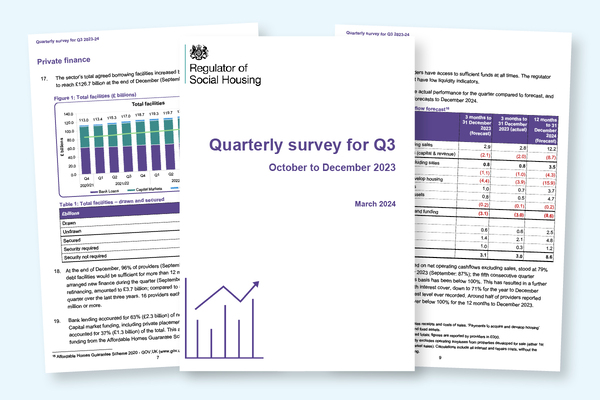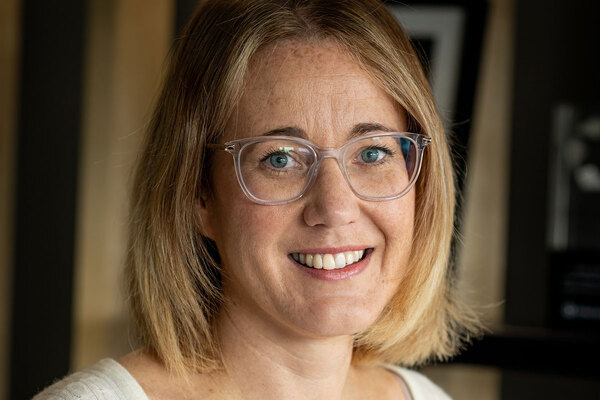Interest cover to fall below 100% this year for majority of London’s largest landlords
The majority of London’s largest landlords will have EBITDA MRI (earnings before interest, tax, depreciation, amortisation, major repairs included) cash interest cover below 100% this year, chief executives have told Inside Housing.

At least seven of London’s 11 biggest landlords, which make up the G15 group, now have an EBITDA MRI cash interest cover below 100%, or expect it to fall below 100% this year.
The figure, which measures a landlord’s surplus compared to interest payable, is a key indicator of financial health and investment capacity.
An MRI interest cover below 100% is manageable in the short term, but if maintained over several years, it could present serious challenges around liquidity and viability.
The chief executives’ warning came after an analysis of rents by landlord Hyde last month suggested that 300,000 homes in London have diverged from the formula rent, which risks making them financially unsustainable.
The G15 has called for the current rent regime, which rolls over until April 2026, to be extended for a decade and for a system of rent convergence to allow rents to gradually return to formula.
Andy Hulme, chief executive of Hyde, told Inside Housing that his housing association’s MRI interest cover will fall below 100% this financial year (2024-25), down from 110.8% in 2022-23, according to the English regulator’s figures.
“We will spend more money maintaining and investing in our existing social homes than we make on them, so [Hyde] will probably have a £30m to £40m gap over the next 12 months,” he said.
Hyde’s yearly investment in existing homes has risen 20% in the past two years, Mr Hulme explained, while its surplus margin has fallen by a third in the same period due to government rent caps.
“It becomes a cash issue,” he said. “Do you have enough money in the bank account, basically. You can’t do it every single year. It’s a bit like spending more money than you earn every month.”
Without the reintroduction of a rent convergence mechanism, Mr Hulme warned that “we may have little choice but to sell” unviable social homes when they become void.
However, he pointed out that MRI cash interest cover is “just one metric” and Hyde does still make a surplus that allows it to reinvest.
Paul Hackett, chief executive of Southern Housing, told Inside Housing that no business can sustain interest cover below 100% indefinitely. Southern’s MRI cash interest cover fell to 72.3% in 2022-23 from 117.9% in 2021-22.
“At Southern, we’re not at risk of breaching our funding covenants, but the situation as it stands means that we are very limited in what we can do in terms of new development,” he said.
Housing associations will “always pull the necessary levers to prevent covenant breaches”, such as stopping development, social impact services or jobs and training programmes, or selling non-core assets such as market rent portfolios.
“So, although the banks will be protected and the credit ratings of housing associations will be protected, the losers from all of this are people on council waiting lists,” Mr Hackett added.
Geeta Nanda, chief executive of Metropolitan Thames Valley Housing (MTVH), said the landlord’s social housing interest cover was below 100%, ie the surplus to interest payable on its core social homes activities.
However, she said MTVH’s MRI interest cover, which incorporates surplus from all business activities, remains above 100%. This figure, which is considered the more significant measure, stood at 105.6% in 2023.
It puts MTVH in a small group of G15 members still reporting MRI interest cover over 100%. L&Q’s figure stood at 144% in 2023-24, while The Guinness Partnership reported 107.8% in 2022-23.
MTVH has expanded its in-house repairs contractor to drive “a lot of efficiency”. Ms Nanda told Inside Housing: “But it’s a fine line. If more regulation or legislation or requirements come over the hill, that would be it.”
While MTVH may be keeping interest cover over 100% for now, she said: “If you have a rent settlement which doesn’t keep in line with inflation, then everybody’s [MRI interest cover] will dive quite substantially.
“If your income isn’t keeping up with inflation or your costs, then your MRI is going to fall significantly.”
Sovereign Network Group (SNG) was formed in 2023 from a merger between Sovereign Housing Association, which reported 121.4% MRI interest cover in 2022-23, and London-based Network Homes, which had 81.7% MRI interest cover the same year.
Mark Washer, chief executive of SNG, did not want to comment on the newly merged organisation’s MRI interest cover forecast. However, he said that SNG’s development plan to build 25,000 homes over the next decade depended on a rent settlement of Consumer Price Index (CPI) inflation plus one for the next decade.
“If that CPI+1 doesn’t happen, that has a significant impact on the business,” Mr Washer said. “What would that mean in terms of the homes that we could deliver? You’re looking at 8,000 or 9,000 fewer homes in terms of that 25,000 ambition. It would be a third or so.”
He added that some housing associations may have to go further than just reducing development to balance the books.
“That will reduce your interest costs, but it won’t reduce your operating costs.
“Sometimes organisations will need to look at cutting back on operating costs, and that potentially includes investment in existing homes,” he said.
In March, Inside Housing reported that an increasing number of housing associations are seeking loan carve-outs with lenders to navigate the challenging economic climate. Several G15 landlords, including Hyde and MTVH, already have carve-outs to cover their building safety costs.
Mr Washer said that in the current market, “it’s probably challenging to expect banks to be particularly comfortable in advance of a crisis, sitting down and saying, ‘We’re happy to loosen the covenants’.”
However, he said banks would be likely to engage in a minority of cases where organisations “appear to be on a trajectory that takes them in breach of their covenants”.
“It’s not in anyone’s interest that the sector has multiple organisations going into default,” he added.
The English regulator’s latest quarterly survey of registered providers’ financial health, published in March, found that interest cover across the country has fallen to the lowest level ever recorded.
G15 members have called for the next government to commit to a 10-year rent settlement, reinstate rent convergence, and provide more grant funding for decent homes, regeneration and building safety works.
“Our ask is more than just we need more grant for social housing, because it’s not about that anymore,” Ms Nanda said. “It’s about sustaining the income for the costs of the organisation.”
Sign up for our development and finance newsletter
Already have an account? Click here to manage your newsletters











